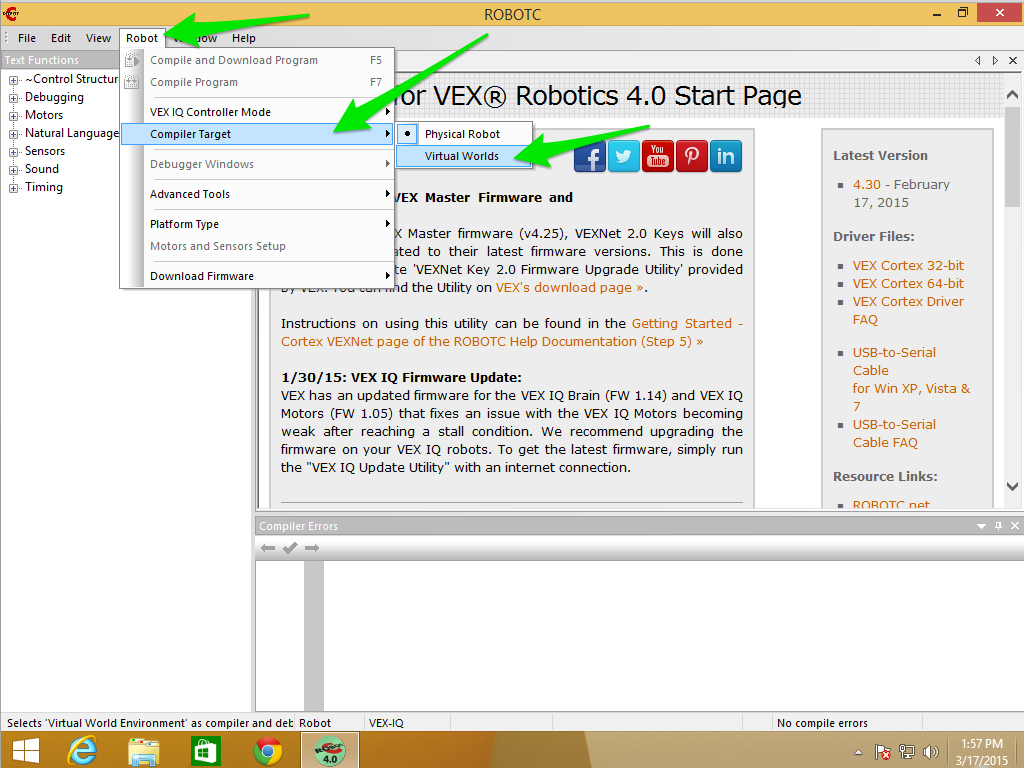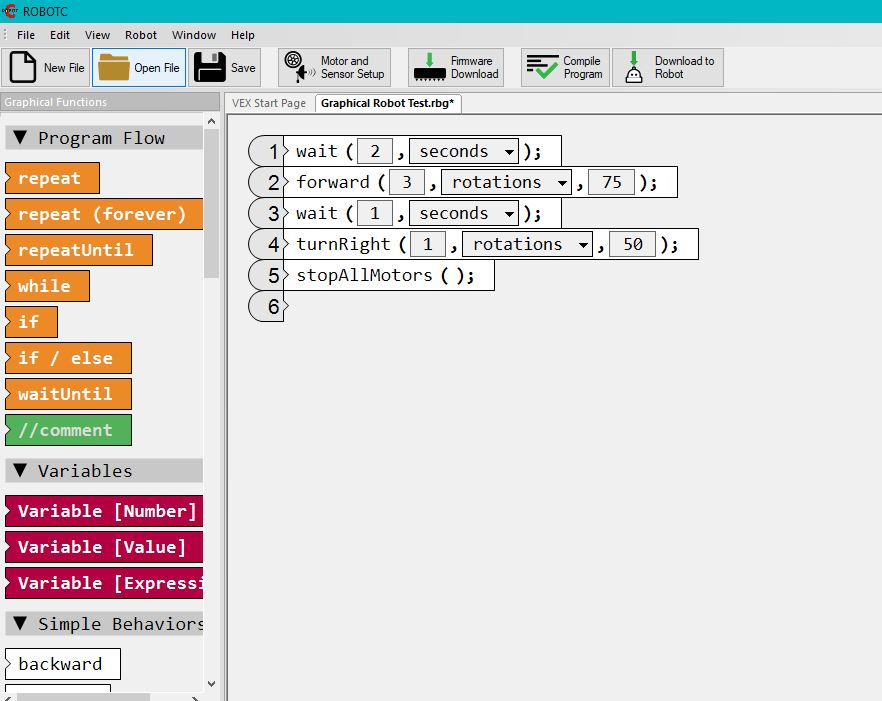
#Learn robotc how to#
You should be able to download a trial version of RobotC to see if your programmer is able to learn how to use RobotC. You can even have them build a mini-FTC robot and see if they can build a simple RobotC program so that they can drive the robot. My recommendation is to have one of your team members (your team's programmer) spend a little time reviewing the training material at the following webiste: As your team gains experience and matures, you will likely consider switching to RobotC. Due to memory constraints on the NXT, you will not be able to have many different LabVIEW autonomous programs loaded on the NXT. One of the biggest issues is that you will want to have many different autonmous programs. Too late to invest in ROBOTC? Would we still benefit from switching? Help!!You will find that most of the better performing teams use RobotC. Everyone seems to recommend ROBOTC and we are using LabVIEW. Some of our kids have competed in Lego Challenge but never FIRST Tech. Okay, now I'm feeling a bit anxious.we too are a brand new team. The logic is easier to see and edit, compiling is instant rather than minutes, and it's generally a sign of a team that understands the logic going into their robot. Throughout all the competitions, the robotC teams tended to do better than the labview teams. At worlds, it was pretty much all robotC. When we picked our partner teams going into the finals, one of the things we asked them was if they used labview or robotC none of the teams we liked enough to interview used labview. (especially when you polled only qualifier winners, and not inspire award teams). At the qualifiers, there was an even split of robotC and labview. My team runs in the Northern California regional, so we have qualifiers just to get to norcals. One of the biggest signs of how more useful robotC is than labview is looking at the spread of teams who use it. It takes about 2 weeks to fully do the course, but if your students can learn robotC, it will help them IMMENSELY in the long run. It's a great place to learn, since it introduces you to both syntax and logic at the same time. Memorizing the robot-specific commands and the syntax for the logic commands is easy, but knowing how and where to use them is the hard part.

#Learn robotc code#
(necessary to keep code easy to read, and for larger programs, easier to edit). In robotC, there are 3 basic things your robot-specific commands (setting motor speed, servos, etc), the logic commands (while loops, if statements, do-whiles) and functions.

I don't know how the logic process differs from labview to robotc, as I have never used labview. The syntax of robotC isn't that hard to learn, but without understanding the logic you're programming, there's no point in using it. If you have no time at all to get them used to the (faster, more advanced) text base coding environment, labview won't hurt, but robotc will be the way to go for furthering their learning. Labview will be easier to get into at first, but robotC will be more useful in the long term.


 0 kommentar(er)
0 kommentar(er)
